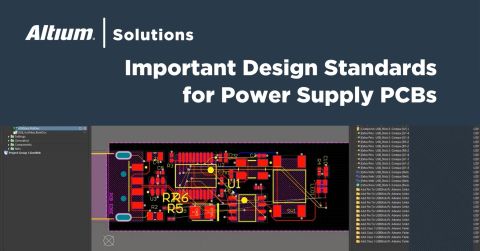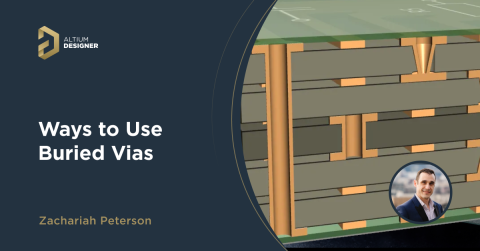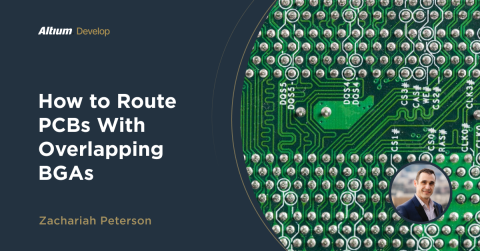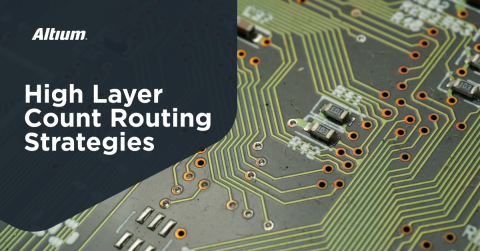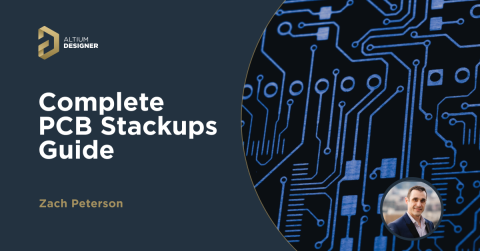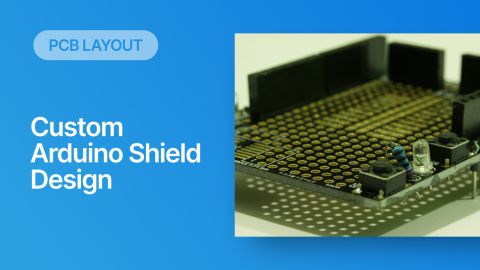Double Sided PCB Design

Although electronics have become more advanced over time, many devices are still built among two layers due to the low cost, volume production, and the readily available fabrication capacity for these designs. For many new designers, two-layer designs are used very often in cases where a four-layer PCB stack-up should be used, leading to cases where these devices fail EMC testing and even have signal integrity problems on fast digital interfaces. There are some simple design rules that can help prevent these problems while ensuring two-layer designs remain simple and low cost. I will run over these important design rules in this article.
Common Misconceptions About Double-Sided PCBs
Two-layer PCBs are among the most common types of PCBs produced worldwide. These designs may be single-sided or double-sided, with applications ranging from consumer electronics to medical and automotive. It's quite common to find simple digital electronics and power supplies built on two-layer PCBs. Despite the fact that they are so common, there are many misconceptions about two-layer PCBs and in particular double-sided PCBs.
Some of the myths I love to hate include:
- The mistaken idea that any functional four-layer design will work as a two-layer design
- The incorrect cost comparison between four-layer and two-layer PCBs
- Two-layer PCBs can/cannot support differential pairs
- Two-layer PCBs always/never need a ground plane
- The misconception that higher trace density is always acceptable
- The mistaken idea that because Arduino works on a two-layer board, any other design could also be done on a two-layer board
These are just some of the misconceptions about the performance of double-sided PCBs with only two layers. Two-layer PCBs are certainly useful, but the above myths should illustrate some reasons why they are not suitable for every design.
Arduinos are some of the most popular double-sided PCBs
Design For Cost Rules For Two-Layer PCBs
Just because a two-layer PCB has a simple structure does not mean it should not have some basic design rules that help address cost, functionality, and reliability concerns. While these devices are intended for mass manufacturing at very low cost, some simple approaches in the PCB layout can help ensure maximum reliability while getting the functionality you need.
- Size vias appropriately - excessively small vias will offset the low cost of two-layer PCBs. Aim for 12 mil drill diameters.
- Low TG laminates - a PCB dielectric material with low TG is appropriate to use in a two-layer PCB that does not operate at high power.
- Component density - two-layer boards are not used with high component density, so larger SMD packages can be used where appropriate.
- Avoid leadless parts - leadless parts tend to have fine pitch that requires multiple routing layers. Avoid these parts unless the pin count is low.
- Spread out the traces - this relates to grounding, crosstalk, and EMI. I will discuss this more below.
I bring up these rules because one of the most common motivators for designers to use two-layer boards is due to the cost. Therefore, it makes sense to ensure the other fabrication steps and features in a two-layer board also have the lowest possible cost.
How to Define Ground in Double-Sided PCBs
On a two-layer PCB with components on both sides of the board, there is most likely also routing on both sides of the board. This creates a challenge for defining ground on each side because the traces take up space that would normally be allocated to ground.
For example, take a look at the two-layer PCB below. In this design, the routing on the top and bottom layer takes up space that could be allowed for ground or power placed as copper pour. In this type of simpler design, ground is normally defined using copper pour, but it requires accounting for some clearance to the traces on the same layer. This leaves regions of the design where signals do not have a clear, tightly coupled reference plane.
The area around the MCU socket in this 2-layer PCB has very little ground around the signals, creating high risk of radiated emissions failure.
If circuits can be routed using traces and copper pour is not used for ground, why would a two-layer board need copper pour? There are several reasons:
- Lower radiated emissions
- Lower EMI susceptibility
- Capability to use faster digital interfaces like SPI
- Support for lower frequency RF designs
- Convenience of making ground connections
Double-sided PCBs and single-sided PCBs with two layers may seem simple, but they are still subject to the same radio emissions regulations as advanced electronics. Compliance with these regulations is a requirement to take a product to market. Depending on what is in the design, this may include an FCC filing and extensive testing, including certification in an accredited EMC test lab.
Double-sided printed circuit boards might also use a chassis ground, Earth ground, and even galvanically isolated grounds depending on the product being developed. We have created many other resources on this blog which provide guidance for designing with these multiple grounds. Take a look at the articles below to learn more.
- Understanding 2-Layer PCB Ground Planes
- Can You Route Digital Signals on a 2-layer PCB Design?
- Routing Requirements for a USB Interface on a 2-Layer PCB
Single-Sided vs. Double-Sided vs. Multilayer PCBs
When deciding on the appropriate PCB architecture for a new design, engineers must weigh the trade-offs between single-sided, double-sided, and multilayer PCBs. Each type serves different performance, complexity, and cost requirements.
Single-sided PCBs have all components and traces located on one side of the board. These are the simplest and cheapest boards to manufacture, typically used in very low-cost consumer electronics, LED lighting systems, and toys. The limitations of single-sided PCBs include limited routing area, poor signal integrity for high-speed signals, and minimal flexibility in circuit complexity.
Double-sided PCBs have copper traces on both the top and bottom layers, allowing more room for routing and supporting more complex circuits than single-sided designs. They are commonly used in devices like power supplies, small embedded systems, and lower-frequency RF applications. Double-sided PCBs still offer low manufacturing costs but introduce more design challenges in managing ground return paths, EMI, and signal integrity compared to multilayer boards.
Multilayer PCBs include four or more layers, with internal planes normally dedicated to power and ground. These boards allow for much higher component densities and trace densities. The entry-level multilayer PCB is a 4-layer stackup, and in fact the most commonly used stackup for digital devices is the SIG/GND/GND/SIG 4-layer stackup. Fabrication cost for prototypes is significantly higher, but the cost difference decreases significantly in volume production.

